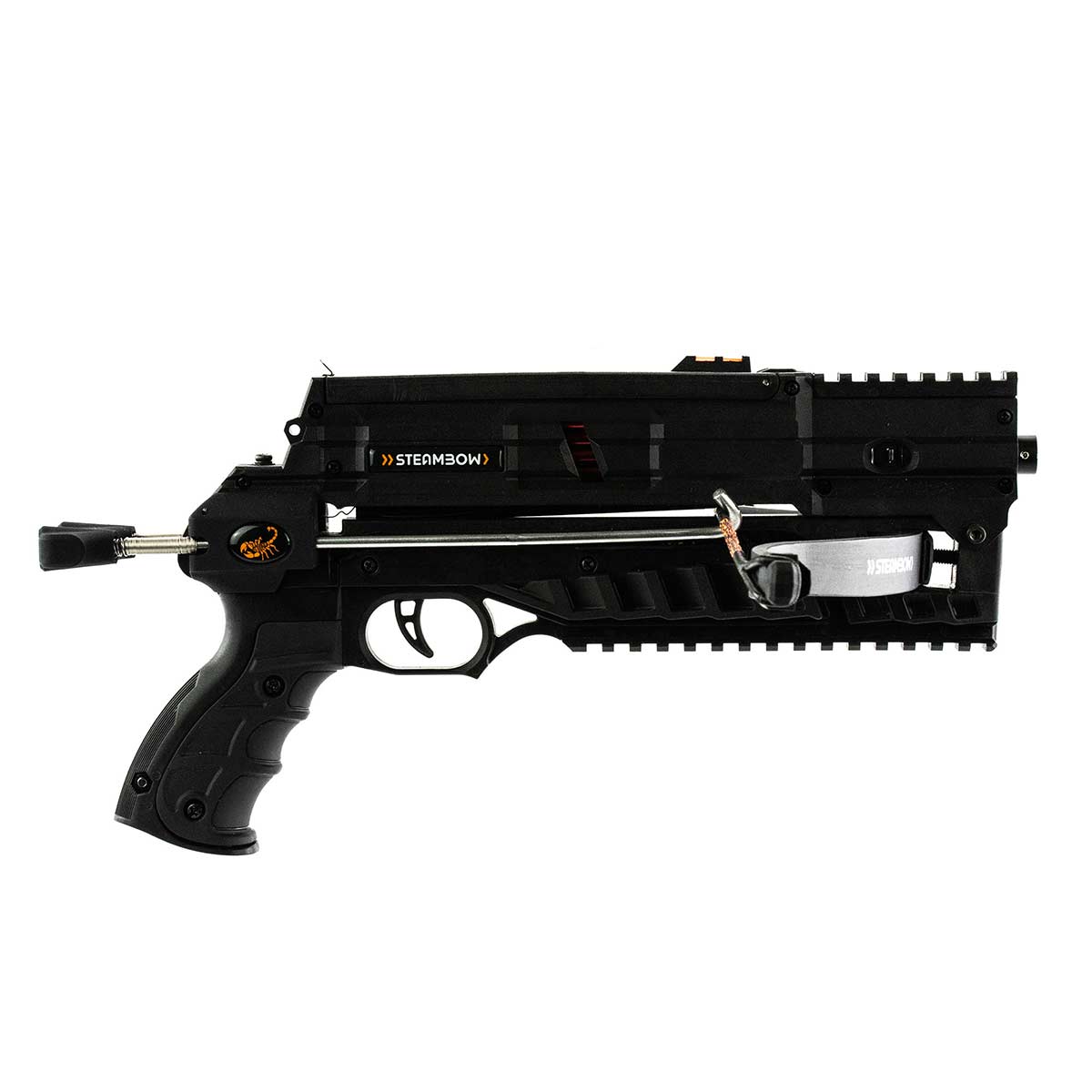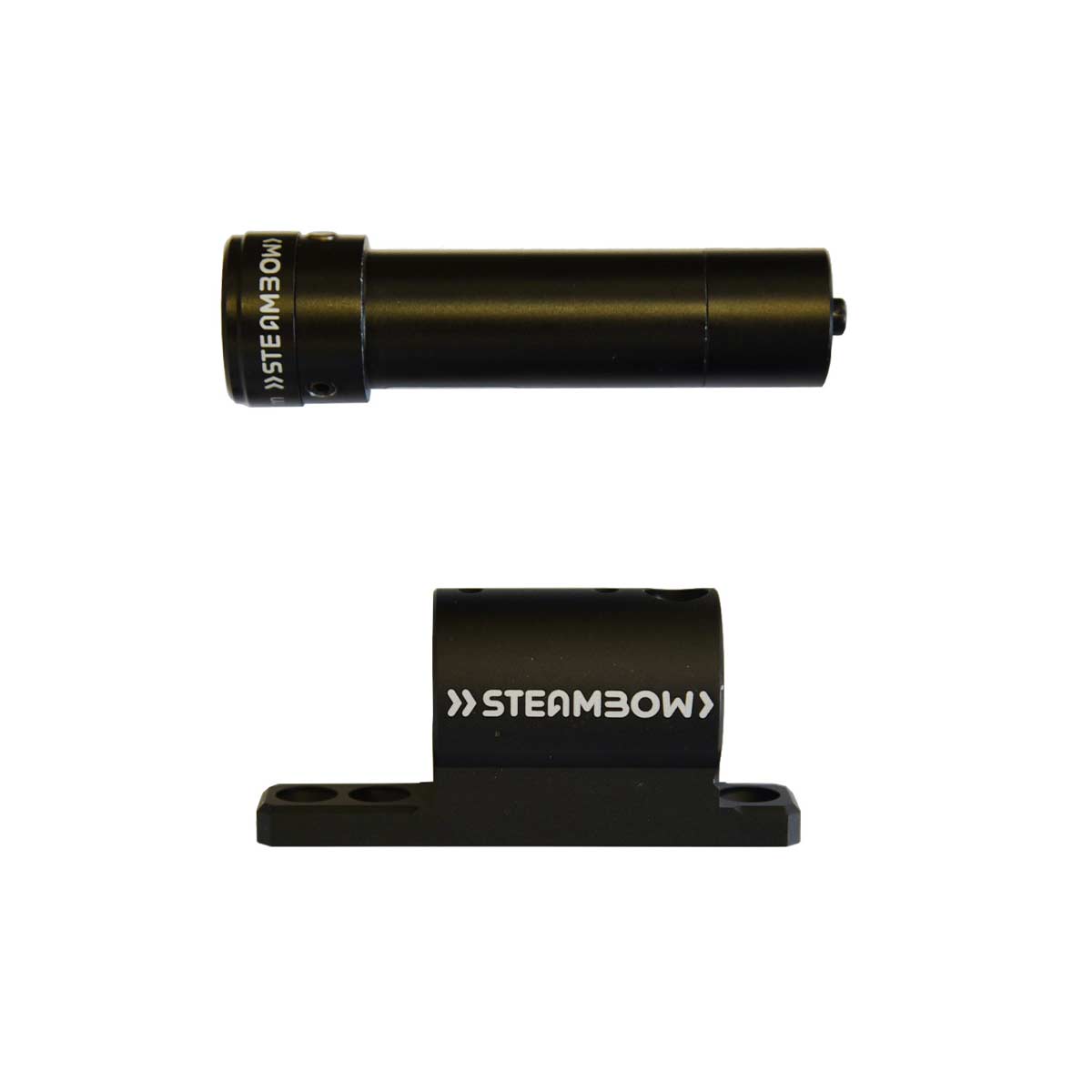
In this piece, you will find an introduction to the various positions you can adopt for shooting a crossbow. See if there is more possible than you realize.
Unless we are familiar with a particular shooting sport, we tend to default to our perception of it in the media: pistols are shot two-handed, precision rifles are shot lying down, and crossbows are shot standing up. Of course, all of those are true, but that is not the extent of it.
Shooting positions
You can shoot standing, seated, kneeling, or prone. You can shoot one-handed (in some cases) or two-handed. Each has advantages and drawbacks. These can be grouped into the following rough considerations: convenience, speed, comfort, and stability – the latter two potentially having a significant influence on your accuracy (and precision if we are to be exact). The method of shooting you should use really depends on where you are and then which of the above is most important to you.
Stand up
Let's begin with the first on the list: Standing. This is the fastest position to adopt, the easiest to move from, and makes tracking targets easier if they are moving. It is also relatively unstressed but will be harder to maintain over longer periods and only offers little stability. Luckily, this effect is reduced with an AR-6 Stinger II since it is light and short compared to full-size crossbows. However, standing is still the hardest to shoot well in, as any movement in your body will end up showing in your aim, and you are relying heavily on muscular support.
That means we are scoring well for convenience, moderately for comfort but quite low on stability and thus accuracy (relative to other positions). How to shoot well standing is a discipline in itself and a little too much for this blog, but as a general rule, you want your feet to be shoulder-width apart and want to stand squared off to the target. If the crossbow stock is against your right shoulder, your left foot should be leading and pointing at the target. Your support hand should be holding the barrel or the foregrip (in the case of the Ar-6 Stinger II Tactical) and should be pressing the crossbow back into the pocket of your shoulder, while your firing hand is more relaxed to you can cleanly depress the trigger. Leave your right elbow relatively close to your body. With a good cheek weld to the buttstock, you can be relatively stable.
Reloading is faster, and moving your location or point of aim is faster too.
Sit down
Being seated slows things down somewhat, although reloading with the lever action of the Tactical is reasonably possible. You will still square your body off to the target as when standing. Sitting down with both of your knees raised will allow you to rest your elbows on your knees, which can offer decent stability and thus less crossbow movement and better accuracy. Over time, however, this position can put greater strain on your back. Moving to a new location is slower as it involves standing back up first, and switching your point of aim also involves shifting your body position while seated, and is slower than when you are standing.
So here, comfort is pretty strong, convenience moderately so, but accuracy should be easier to maintain, especially if you have not been seated for too long.
Down on one knee
Kneeling is a nice midpoint between standing and sitting. You have more contact surface with the ground and move less, giving you greater stability. Kneeling does not mean sitting on your heels with both knees flexed, however.
There are different ways to kneel when shooting a crossbow. A high kneeling position offers good stability, and faster position changes than sitting. If again shooting with the buttstock in the right shoulder, your right leg is bent with your toes and knee on the ground, and you sit on your right heel. The left leg is bent but up with the knee at around chest level. This means you can use your left knee as a rest, giving you greater accuracy. But moving around is slower than when standing, and it might not be a position you can remain in indefinitely. I certainly can’t!
Taking things lying down
Prone or lying is by far the most comfortable and stable position, but comfort here depends on the spot you pick. There are several methods of shooting prone, but a very common one (with the buttstock in the right shoulder) looks like this: looking from above if the crossbow is pointed in the 12 o’clock direction, my body and spine are also pointed in the 12 o’clock direction, in a straight line behind the crossbow. If your flexibility allows, point your toes out and lay your heels down on the ground for more ground contact and greater stability. If you feel an uncomfortable pressure in your chest, you can cock your left leg in slightly to raise your chest up off the ground.
This makes it the easiest to aim consistently, but every time you want to reload, you have to break position if you are using the buttstock lever to cock, so it takes more time. One way I know of being able to stay in position to shoot a crossbow is by using a Steambow PowerUnit crossbow, where you let a compressed-air-activated riser flex and unflex the limbs meaning you can reload lying down very easily. Another method with a Stinger Survival with a suitable draw weight is to use two hands to cock the string symmetrically while remaining in the prone position. For everything else, up you get!
Add some flair
In almost all these situations, you will be shooting two-handed. One-handed shooting is possible with the AR-6 Stinger II Compact and most likely in the standing position. If you have a laser as an aiming, you can also have some fun shooting “from the hip” or at least without a cheek weld, using the laser dot to tell you where the crossbow is pointing. Although great fun, that has greater risks involved, so only try it with care.
This brings us nicely to a final consideration to mention (yet the first to consider) is safety. Beyond the good, safe shooting practices discussed here, there is an additional thing to remember: what is immediately around you.
Avoid costly mistakes
Some years ago, with a completely different crossbow, I was shooting in my backyard when a gust of wind blew the plastic tub I kept my string and rail grease in towards my end of the table just as I squeezed the trigger. The tip of my right side limb struck the plastic box as it started to decompress, obliterating it. After working out what had happened, I was first grateful none of the plastic bits had made it past my safety glasses. Then I was glad it hadn’t been something harder, like the back of a chair. It cost me a new limb and string. And I missed my shot.
Lesson learned: from then on, I always check that nothing is or can get in the way of my limbs when they decompress. Be sure to do the same. That means parts of the body too. You need to be certain that when your limbs go from the cocked to the resting position, nothing will be in the arc of the limb tips. Otherwise, it will cost you money for sure, but it could cost you far more.
Have fun
Despite that somber but necessary note, it is fair to say you can enjoy shooting your lightweight, easy-to-load AR-6 Stinger II pretty much anywhere and in any position. This depends on your priorities, your location, as well as your targets: shooting lying down if your target is 5 meters away will look a bit odd. Shooting standing up if your target is at 30 meters might be ambitious!
In any case, it’s your shooting experience, preference, and hobby so get stocked on strings and arrows, then get out there and have fun.








